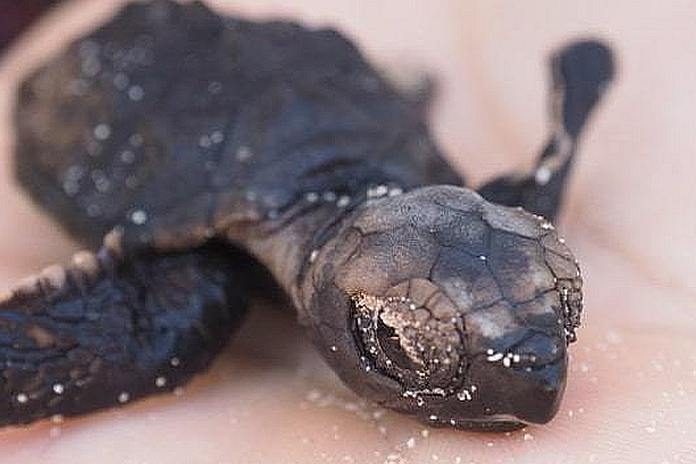GEORGE TOWN, Cayman Islands (CNS) – After the longest ever recorded turtle nesting season in the Cayman Islands, researchers have confirmed that 675 nests were counted between the discovery of the first nest in April on Grand Cayman to the last found in December in Little Cayman, where the final little hawksbill turtle, Cayman’s rarest nesting turtle, was helped out just this week. This is the second-highest count ever recorded by the Department of Environment (DoE) since it began monitoring nests in 1998, only surpassed in 2017, when there were 689.
DoE staff and volunteers recorded 468 nests on Grand Cayman: 342 green turtles, 125 loggerheads and one hawksbill nest. On Little Cayman, they recorded 86 green turtle nests, 65 loggerheads and three hawksbills, for a total of 154. Cayman Brac had the lowest number of nests at 53, five of which were green turtle and 48 loggerhead nests, but no hawksbills laid there at all.
While the numbers are positive, this season will be marked for its length. The nesting season is normally recorded as May to November, but turtles don’t keep calendars and this year they started early and continued through to February.
The good news is tempered by the fact that, as the turtle numbers grow, so do the threats grow, according to Janice Blumenthal, the DoE’s senior researcher, and turtle expert, in an email report about this season’s statistics.
The DoE is pressing hard for the implementation of its Turtle Conservation Plan, which has been through a public consultation and is now in the hands of Cabinet awaiting approval. The DoE believes this plan will manage artificial lighting in critical nesting habitat, reduce poaching, ban vehicles from the beach and give greater power to the DoE to address other threats.
While a lengthy season and solid nesting numbers are a positive outcome, wild turtles are still very much endangered. But the army of volunteers who help the DoE do the research work and watch and monitor the nests are critical to ongoing conservation efforts.
“We are extremely grateful to the dedicated volunteers across the three islands who have assisted with turtle monitoring this year,” said Blumenthal. “We would never be able to monitor and protect our nesting populations without them.”
Republished with permission of Cayman News Service





